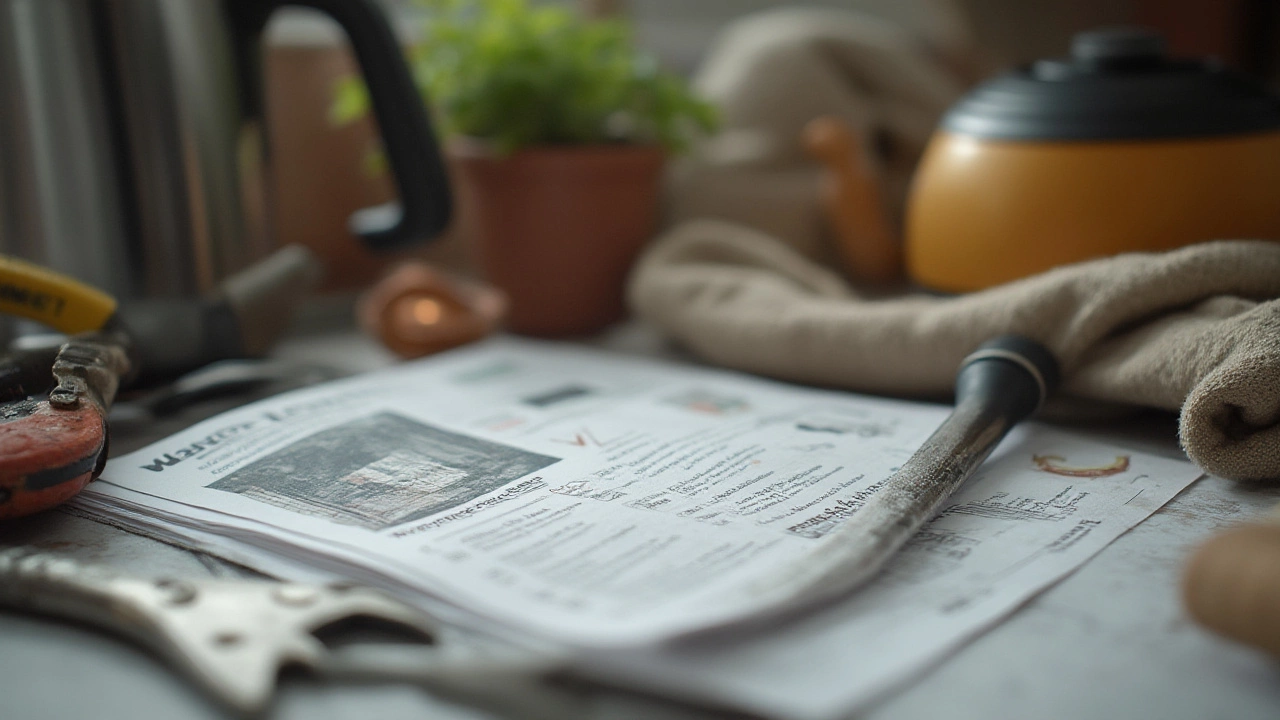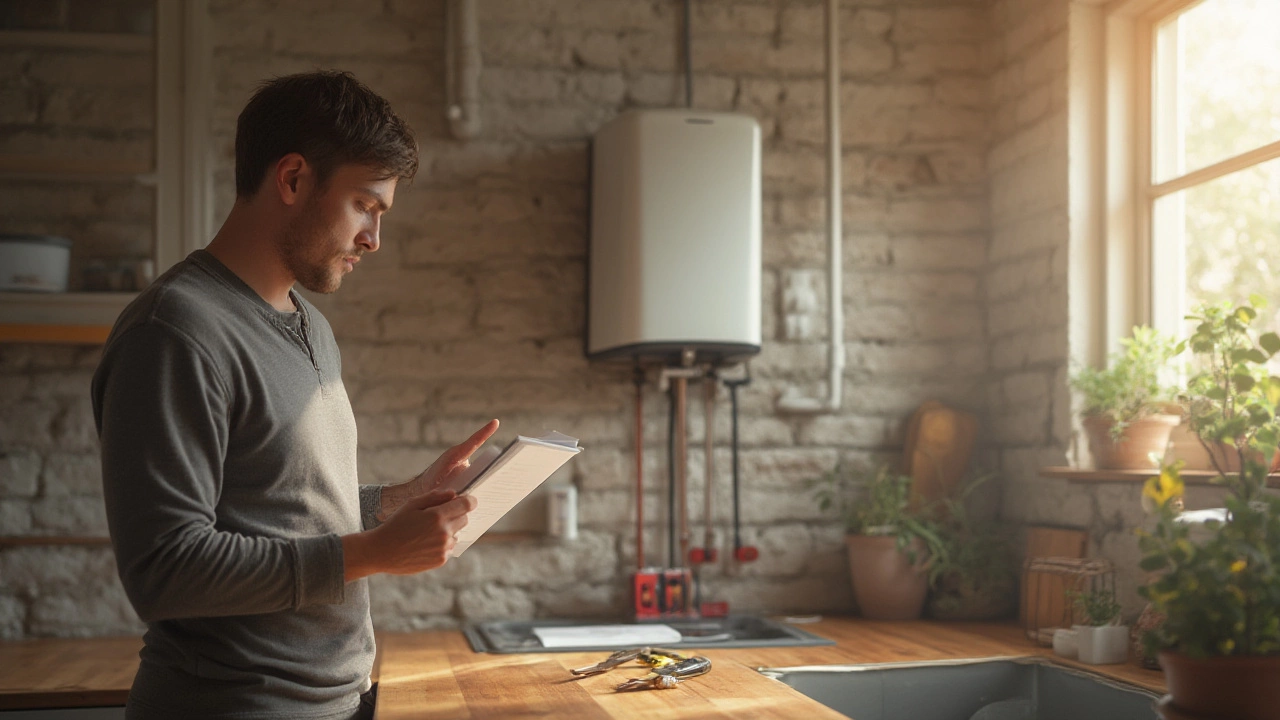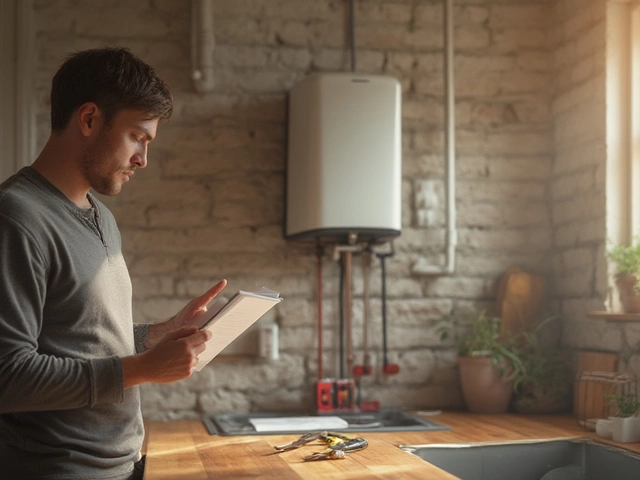You might not give your water heater much thought until you’re shivering in a cold shower or seeing puddles where they absolutely shouldn’t be. In a moment of panic, your mind might go straight to YouTube tutorials and visions of saving hundreds by fixing things yourself. But mess with the wrong part, and you could end up wishing you’d just called a pro. Should you grab the toolbox, or is this a job for someone who actually knows what they’re doing?
Common Water Heater Problems You Can Actually Fix
Ever noticed your shower getting colder, or your sink water turning brownish? Let’s talk about what you might be able to handle on your own before you reach for the phone.
First off, electric water heaters stopping dead often trace to a tripped circuit breaker or a faulty thermostat. Sometimes, all you need is to flip the breaker back on or swap in a new thermostat. A multimeter can save you a lot of guessing. For gas water heaters, the pilot light is a frequent troublemaker. If it’s out, relighting it is usually safe if you follow the instructions on the unit – but never if you smell gas. Corrosion around the water inlet, popping noises, or leaking at the drain valve scream out for attention but aren’t always a reason to panic. Draining sediment from your tank often quiets down weird noises and can make your heater last longer. You can do this easily with a garden hose and a bucket.
Replacing heating elements or thermostats on electric units isn’t exactly rocket science. Basic tools, a good video, and a little caution are all you need. If you can confidently turn off circuit breakers and verify zero voltage, you’re on the right track. Flushing sediment is basically as simple as draining your pasta—attach a hose, shut off power and water, pop open the drain, and let it run until clear. Most tank water heaters should be flushed once a year, especially in areas with hard water. The Department of Energy suggests this not just to save money on bills, but also to extend the life of the unit by years.
Here’s a quick glance at problems you can usually fix (without a badge in plumbing):
- Circuit breaker tripping (flip it back and check condition)
- Pilot light out (relight if you smell no gas)
- Minor leaks at drain valve (tighten or replace)
- Sediment buildup (flush the tank)
- Thermostat or heating element swap (if you’re handy with wiring)
Tools you’ll need: phillips and flathead screwdrivers, a multimeter, a wrench, and a hose. Safety glasses and gloves always help. For minor troubleshooting, there’s basically no harm in checking parts, tightening loose screws, or giving things a good flush, as long as you’ve killed the power. The average person can tackle these issues with a little research and a lot of caution.
Risks and Dangers of DIY Water Heater Repairs
You’ve got the DIY itch, but let’s keep it real—water heaters mix water, electricity, and sometimes gas, and that’s a cocktail that can go very wrong. Numbers from the U.S. Consumer Product Safety Commission show that faulty water heaters are behind thousands of house fires and dozens of explosions every year. And electric shocks? They send folks to the emergency room far more than you’d think. Water heaters don’t play around if you skip steps or guess at what goes where.
Electric heaters have enough voltage running through them to seriously injure or even kill. You have to be 100% certain the power's off before you take anything apart. A simple mistake—like letting metal tools cross terminals—can give an unforgettable (and not in a good way) jolt. Don’t overestimate your courage when breakers are involved. High voltage is less forgiving than a leaky faucet.
Gas water heaters bring their own horrors. A loose connection, an uncapped gas line, or relighting a pilot with gas still floating around can lead to dangerous explosions. That’s not a scare tactic—it’s hard, cold truth. Gas leaks aren’t always obvious; you might not smell anything. If you even suspect a gas leak, leave the house and call professionals from outside. Never take risks with gas. Ever.
Scalding is the silent danger. A faulty thermostat means your tank could be heating water well above the safe range (49°C or 120°F, per the CDC). Water that hot can cause third-degree burns in under five seconds. Removing access panels or draining the tank without cooling can leave you with splashes of near-boiling water—think instant ER trip.
There’s also the legal side. Did you know some regions require a licensed plumber for certain repairs and installs? Mess it up, and you’re not just paying for new parts, but possibly facing fines or insurance claim denials. If your tank’s under warranty, even swapping a thermostat might void it. Check the terms before you get started.
Let’s look at some data for context:
| Issue | DIY Difficulty | Common Risk | Recommended for DIY? |
|---|---|---|---|
| Tripped breaker | Easy | Minimal | Yes |
| Heating element replacement | Moderate | Shock, burns | Yes, with caution |
| Pilot relight (gas) | Easy | Gas leak, explosion | Yes, if no leak |
| Major leaks/valve replace | Advanced | Flooding | No |
| Gas valve/line work | Expert | Explosion | No |
Everything else—major leaks, diagnosing gas valves, replacing entire units—should go to a pro. So when in doubt, or if things look sketchy, don’t risk it.

How to Decide if You Should Call a Professional
Sometimes, the best tool is your phone. But knowing when to call for backup isn’t always obvious. Here’s how you can figure it out without second-guessing yourself all week.
First test: Smell. Do you catch even a hint of gas around your heater? Don’t fiddle, call the gas company or fire department stat. No hesitation. Next, check the floor. Any puddles or tanks that are leaking from the bottom mean the inner lining is probably done for. Don’t believe any ‘quick fixes’ online—tank replacement is the only real option, and that’s a job for insured pros.
Lack of hot water, strange noises, or blinking indicator lights can have a dozen causes. If you’ve tried switching breakers, flushing sediment, and checking visible wiring and still have trouble, it’s time to step away. If you notice rusty water coming out of taps, or a metallic taste that lingers, you’re looking at corrosion. Fixing internal tank rust is pretty much impossible at home—you’ll need a full replacement soon.
With tankless heaters, things get trickier. These units are packed with sensors and safety systems that aren’t always DIY-friendly. Error codes can be misleading, and a quick internet search might steer you wrong. Unless you’re confident with electronics and are following the specific manufacturer’s instructions, let the specialists handle advanced diagnostics.
There are a few clear “call the pro” scenarios:
- The tank is leaking from the bottom or seams
- You see scorch marks, melted wires, or the smell of burning
- Anything involving gas valves, gas lines, or irregular pilot performance
- Ongoing electrical problems after simple fixes
- You have a hybrid or high-efficiency tankless unit with error codes
Don’t feel bad for calling someone. Research from HomeAdvisor shows most professional water heater repairs fall in the £150-£400 range, and a new tank often costs £900-£2,000. It’s better to pay for an honest fix than to double or triple the cost with a botched attempt. Many pros even offer same-day diagnostics and won’t charge for repairs you don’t need.
Some localities also require repair permits, and DIY work without a permit could leave you stuck with an extra inspection fee. Always ask if there are any legal hoops before you start.
Money-Saving Tips and Maintenance Tricks
If you want to actually save money long-term, prevention trumps repair work every time. A well-maintained water heater will cost less and last longer, and you won’t be spending Saturday afternoons wrestling with leaking pipes.
Start with flushing the tank once a year to get rid of sediment—especially if your area has hard water. Hard water minerals don’t just sit in the bottom of the tank; they cling to heating elements, making your water heater work way harder and driving up your electricity bill. According to the EPA, sediment can increase your energy use by up to 25%, which means real extra money spent each month.
Insulate the hot water pipes connected to your heater with foam sleeves (they cost a few pounds at any hardware store). The Department of Energy says you can save between 4-9% on your bills, and hot water arrives faster too.
Keep the thermostat set at 120°F (49°C). You’ll lower your energy use, slow the development of mineral deposits, and prevent accidental scalds. If your heater doesn’t have a temperature dial, some have a hidden screw behind a panel. A simple meat thermometer shoved under a faucet is the fastest way to check real output temp.
Check the pressure relief valve (it’s usually a lever near the top of the tank) every six months. Just toggle it for a second—if water flows out the drain pipe, it’s working. If not, get it replaced. These valves are crucial for safety, letting steam and excess pressure escape before things get dangerous.
Consider adding an expansion tank if you’ve noticed banging pipes or high-pressure issues. Some new building codes actually require them, especially with updated plumbing.
And watch out for red flags: rust, metallic taste, discolouration, popping sounds, or persistent leaks. Don’t ignore these, even if everything still feels warm. If caught early, you can sometimes avoid a full replacement.
- Flush water heater tank annually
- Insulate pipes and tank (special wraps)
- Set water heater temp to 120°F/49°C
- Test pressure relief valve every 6 months
- Replace anode rod every 4-5 years
Cost-wise, these steps are cheap—pipe insulation is under a tenner, flushing is free, and replacement anode rods are about £20. Most water heater disasters start from neglect, not just bad luck.

The Verdict: Should You Fix Your Own Water Heater?
The urge to grab a wrench, save some cash, and fix your own DIY water heater repair issues is strong—and for minor things, you’re probably up to the challenge. Flip a breaker, flush a tank, swap a thermostat if you’re comfortable, and you’ll probably pat yourself on the back and enjoy a toasty shower afterward. But don’t get cocky with gas lines or electrical guts. That line between “handy” and “hazardous” is much thinner than you think. According to insurance claims data from 2024, nearly 12% of home fire claims were traced back to improper appliance repairs—water heaters topping the list alongside dryers and ovens.
If you own basic tools, respect safety procedures, and stick to what you know, DIY can be just as effective as a callout. And if you’re smelling gas, see leaks, or feel out of your depth, skip the pride and bring in someone certified. It might just keep your house in one piece.
If stories from friends are anything to go by, the worst day is realizing you made it worse. Save DIY for the simple fixes, and maintenance for peace of mind. For everything else, your heating system deserves a pro’s touch. Who needs another cold shower?



